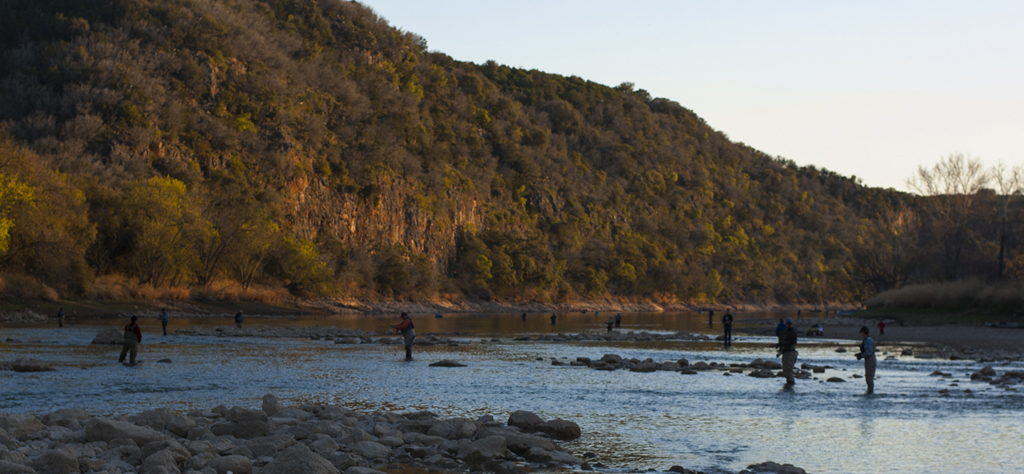By John Jefferson
A man told a sportsmen’s group recently that a fishing guide had told him the white bass were running on Lake Travis. He suggested they form a group to fish. By end of the meeting, he had enough people for a late January or February trip.
He didn’t say when the fishing guide told him that, but if you’ve fished much, you know that when someone tells you the fish were biting holes in his boat the day before, that doesn’t mean they will bite today.
If the guide told him where the bass were biting in late December or early January, that doesn’t mean they’ll be biting there in late January or February. Several of the best stringers of whites I’ve ever caught were strung in February or March. I remember it was chilly – way too cold to wade and then walk back to the truck.
Late one afternoon I had jumped out onto a big rock close to shore because overhanging brush made casting from the bank treacherous. It was my first white bass foray of the year. I hadn’t had a bite. As twilight turned into dusk, I was about to call it a night. Then, I felt a bump.
I cast back to the same spot in the current and this time it wasn’t just a bump. FISH ON! My heart raced as I pulled the white bass out of the stream. It looked to be 12 to 13-inchess long, plenty enough to satisfy the statewide ten-inch minimum length limit. I strung it and tied the stringer to a belt loop on my Levi’s and cast again.
Twenty or thirty minutes later, I counted my catch. It was several bass shy of the 25 white bass statewide limit — and I was getting colder. It took me a few minutes longer to land the last few of the limit. I counted again and it came to 25. Then I realized I had a problem.
In the dimness, the bank looked farther away than when I jumped out onto that rock. Maybe the creek had risen. Maybe I was stiff from standing on one rock so long — and now had 25 fish on a stringer to jump with. I could have waded ashore, but it was now much chillier than before sundown. I tied a knot in the open end of the stringer and balanced on the rock swinging the stringer back and forth until I had enough momentum and flung it to the bank. It barely cleared the water.
That was on a narrow tributary to Lake Travis – a good three-to-five miles from the main lake. But that’s what white bass do in early spring. They migrate from the deep lakes and move upstream into creeks and river channels to spawn.
And that’s why experienced white bass fishermen fish upstream. Whites stage in deep holes waiting for the right time and then females dash through running water to deposit their eggs and males cover them with milt.
JJ





